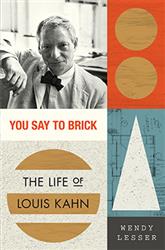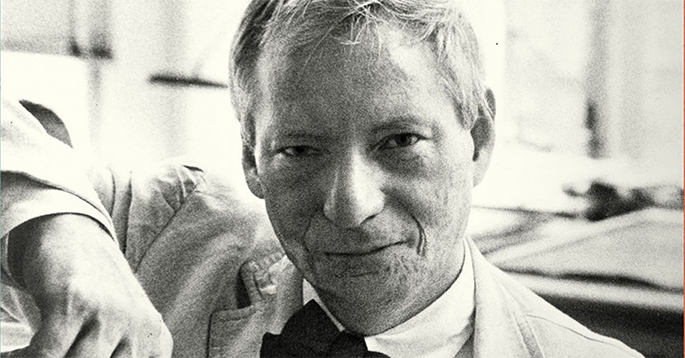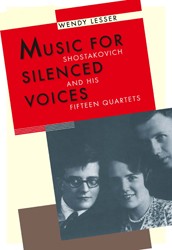Earlier this week, Wendy Lesser wrote about why she chose to write You Say to Brick: The Life of Louis Kahn. Wendy is guest blogging for the Jewish Book Council all week as part of the Visiting Scribe series here on The ProsenPeople.
Louis Kahn’s Jewish parents, Beila-Rebeckah Mendelowitsch and Leib Schmulowsky, were married in 1900 in Livonia, the Russian-held province that before World War I encompassed Latvia and southern Estonia. Less than year later, in February of 1901, the future American architect was born there, either on a Baltic island or on the mainland nearby, under the name Leiser-Itze Schmulowsky. According to the rabbinical record, kept in both Russian and Hebrew — as all Jews had to be registered in that time and place — he was circumcised seven days after the birth. Upon his arrival five years later in Philadelphia, he was given a new name, Louis Isadore Kahn. While the new name retained the Jewish associations of his original Eastern European name, it made him sound classier and German-Jewish.
It is not clear whether his first name was intended to be pronounced “Lewis” or “Louie”; from childhood onward he was known simply as Lou, and that was what everyone called him, including his colleagues, his employees, his relatives, and his lovers.
Lou spent a total of one day in religious school (his mother snatched him out, apparently, after the teacher smacked him) and he was never bar mitzvahed. When he grew up, he married a Jewish girl, Esther Israeli, from a highly assimilated Philadelphia family. Their wedding was conducted by a rabbi, though Esther always insisted this was done solely for Kahn’s parents, since she would have preferred a secular wedding.
Of Kahn’s three children, one was born to Esther and one each to two separate non-Jewish women with whom he carried on long-term love affairs: the architect Anne Tyng and the landscape architect Harriet Pattison, both of whom worked with him. (All three women knew about one another, as did all three children. The fact that Kahn had three families was a widely shared secret in the small-town Philadelphia of his time.) An additional significant love affair — though one that did not result in a pregnancy — was with another architect who worked for him, Marie Kuo; she was not Jewish, either.
 Some of his male friends were Jewish (though many were not); his favorite client was Jonas Salk, who, like him, was the child of Eastern European Jews. Kahn had what many people think of as a Jewish sense of humor: self-deprecating, ironic, intimate. Despite the severe scarring of his hands and face that resulted from a childhood accident, he carried himself confidently, as if he were comfortable in his own skin, and people — especially women — found him attractive. Some of this self-confidence can perhaps be attributed to his mother (now renamed Bertha Kahn), who in typical Jewish-mother fashion lavished a great deal of attention on her brilliant oldest son. Like many immigrant mothers, she husbanded the family’s limited resources, but what she could spend, she spent on Lou. In somewhat less typical fashion, Bertha left him alone to find his own way through the poverty-stricken world of Philadelphia’s Northern Liberties district. In later life, Kahn credited her with having “absolute confidence” in him.
Some of his male friends were Jewish (though many were not); his favorite client was Jonas Salk, who, like him, was the child of Eastern European Jews. Kahn had what many people think of as a Jewish sense of humor: self-deprecating, ironic, intimate. Despite the severe scarring of his hands and face that resulted from a childhood accident, he carried himself confidently, as if he were comfortable in his own skin, and people — especially women — found him attractive. Some of this self-confidence can perhaps be attributed to his mother (now renamed Bertha Kahn), who in typical Jewish-mother fashion lavished a great deal of attention on her brilliant oldest son. Like many immigrant mothers, she husbanded the family’s limited resources, but what she could spend, she spent on Lou. In somewhat less typical fashion, Bertha left him alone to find his own way through the poverty-stricken world of Philadelphia’s Northern Liberties district. In later life, Kahn credited her with having “absolute confidence” in him.
Kahn worked on several synagogue commissions in the course of his life, but his two greatest synagogue designs, Mikveh Israel in Philadelphia and the Hurva in Jerusalem, were never built. Two of his most successful projects were a church (First Unitarian in Rochester) and a mosque (part of the National Assembly Building of Bangladesh). When he was hired to design the Memorial to the Six Million Jewish Martyrs in Battery Park, he labeled its central glass pillar a “chapel”; the memorial was voted down by a committee of fifty prominent Jews. When working on the Mikveh Israel commission, Kahn wrote “Kaddish” and “kiddush” in the margins of one of his plans to remind himself of the different Hebrew terms; again, the synagogue membership ultimately rejected his plans. He apparently viewed all religions as essentially one, and though he was frequently described as a person of great spiritual depth, he did not practice any religion himself. He joined the Rabindranath Tagore Society in Philadelphia before embarking on major work on the Indian subcontinent, and he studied Islamic architecture before building the government center in Bangladesh.
As an adult, Kahn never celebrated Jewish holidays, but he and Esther donated small sums, intermittently, to various Jewish causes; they also donated $1,000 to the Unitarians in 1961, when he was working on the church. His extended family, included Esther’s sisters and cousins, celebrated Christmas every year at Kahn’s house.
When he died suddenly in 1974, a rabbi he had never met was hired to conduct his funeral service — a decision made without his own involvement. Since his parents had both been buried by rabbis, people assumed he would have wanted that, too.
Wendy Lesser is a member of American Academy of Arts and Sciences and the founding editor of The Threepenny Review. She has received fellowships from the Guggenheim Foundation, National Endowment for the Humanities, the Dedalus Foundation, and the New York Public Library’s Cullman Center for Scholars.
Related Content:
Wendy Lesser is an American critic, novelist, and editor based in Berkeley, California. She is a member of the American Academy of Arts and Sciences and the founding editor of The Threepenny Review. Wendy has received fellowships from the Guggenheim Foundation, National Endowment for the Humanities, the Dedalus Foundation, and the New York Public Library’s Cullman Center for Scholars and Writers.




